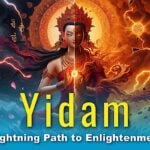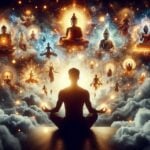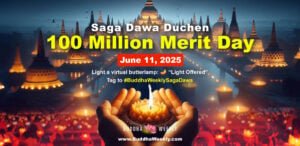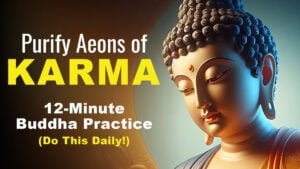The Sacred Power of Relics: What Are Relics, Where Are These Treasures, and How Can They Help Us?
Buddhist relics are not as well-known in the Western world. Traditionally, relics are the sacred cremated remains of the Buddha, or other sages. Relics, historically, were housed in Stupas, which became synonymous with the Buddha and Buddhism. Although the teachings lived on in the Dharma and Suttas , the Stupas were initially the visible reminder of the great legacy of Shakyamuni Buddha.
By Beth Rush
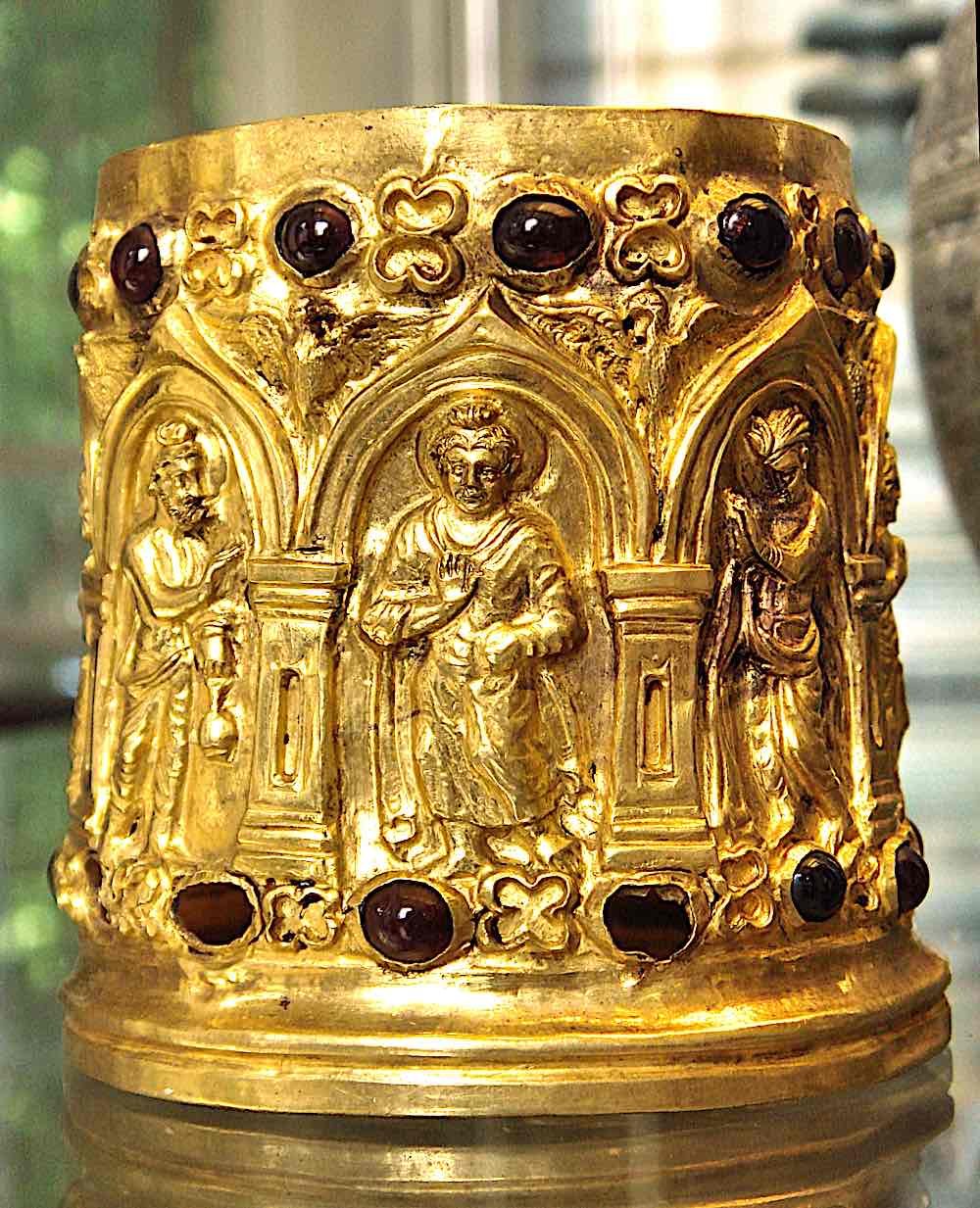
What Are Relics in Buddhism?
The original relics in Buddhism refer to the cremated remains of Siddhartha Gautama, the great teacher and Buddha. According to the Mahaparinibbana Sutta, his lay followers claimed his ashes once he achieved parinirvana after death. A Brahmin named Drona divided the ashes into eight portions. He claimed the cremation vessel and passed the remaining ashes of the funeral pyre to yet another.

Today, you can find Buddhist relics in several Asian countries. Relics include Shakyamuni Buddha’s Finger Bone, several of his teeth and other carefully preserved bodily manifestations of the Buddha. (See photos.) For example, Pakistan is home to 20 of the most important Buddhist sites, including the first relic of a sleeping Buddha. You can find other relics in Vietnam, Sri Lanka, Thailand, Myanmar, Bhutan, Bangladesh, India, China, Korea and Japan.
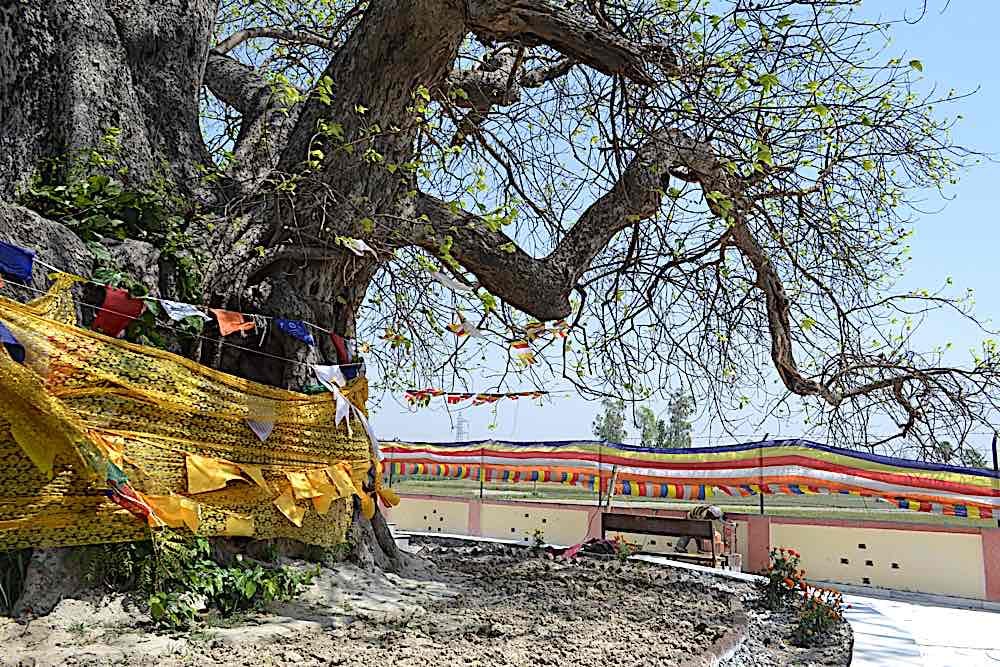
However, you don’t necessarily need a passport stamp to view Buddhist relics. They occasionally tour international places of worship, including New York’s Thekchen Choling Sangha.
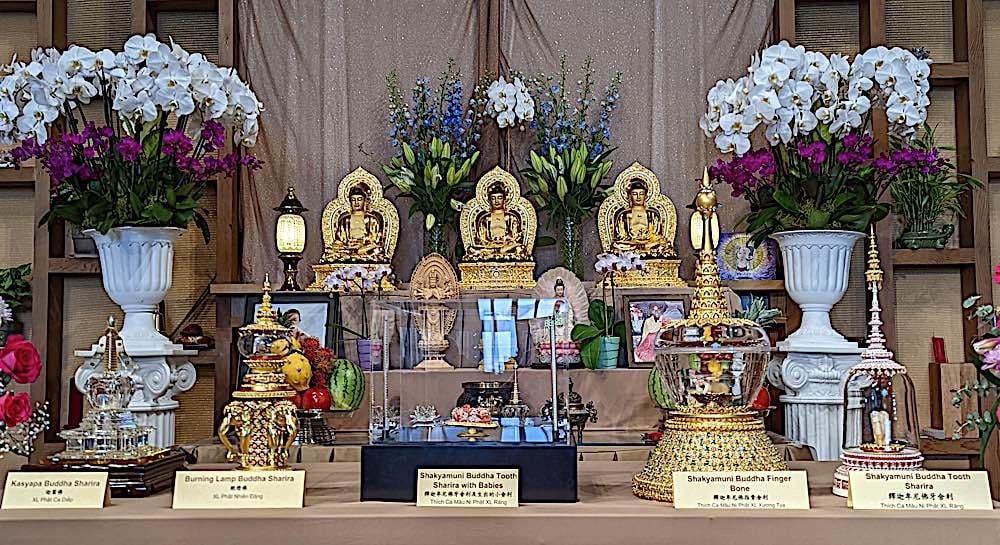
Buddha Relics displayed on the 10,000 Buddha Relics Collection
By Wikiuser3490 – Own work, CC BY-SA 4.0>>
The relics of Siddhartha Gautama aren’t the only relics in Buddhism. It’s common for some Buddhists to collect pearls or sharira formed by the funeral pyres of important wise yogis. You can see these beautiful gems on display. Oddly enough, these deposits are unheard of in Western cremations. They are considered evidence of the deceased’s enlightenment and grant the bearer certain powers.
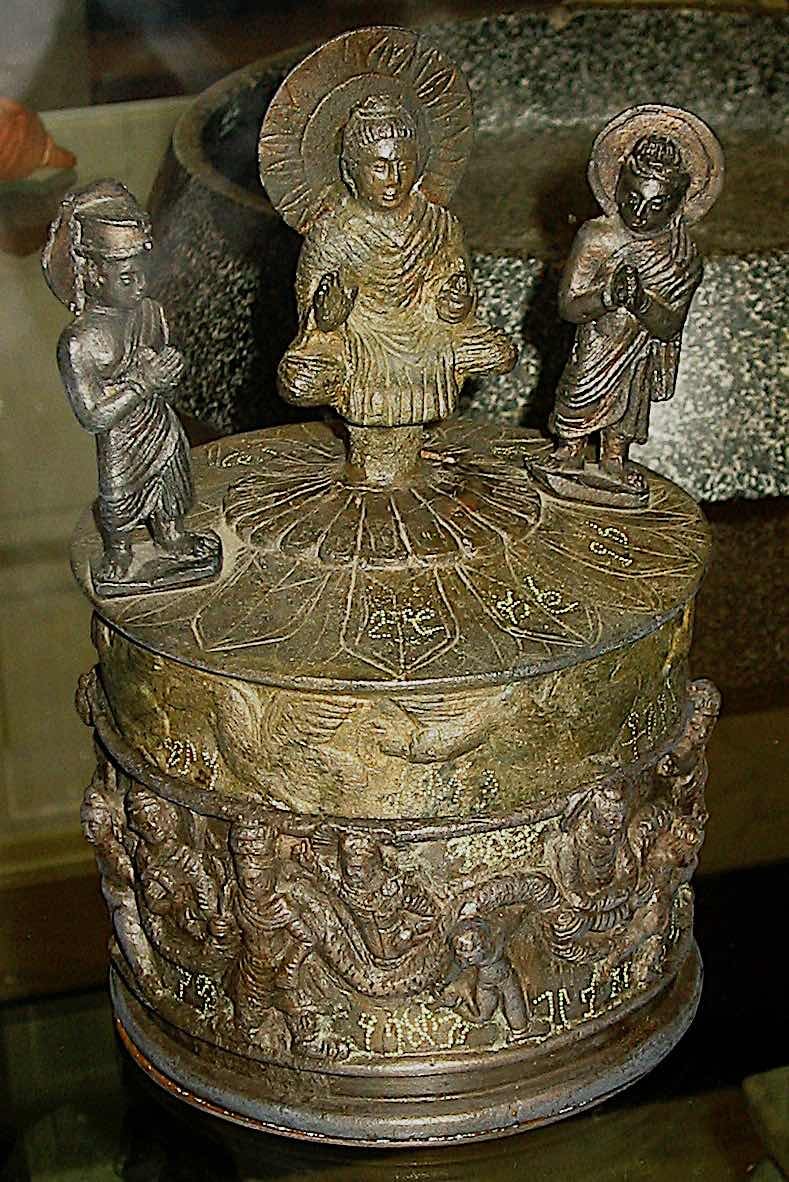
Nepal’s Buddhist Ayurvedic Tradition
Although Drona divided the original relics of Buddhism among various stupas, the emperor Ashoka opened them, ordering them to be distributed to 84,000 stupas around the world. Only one of the originals remains intact: Nepal’s Ramagrama stupa.
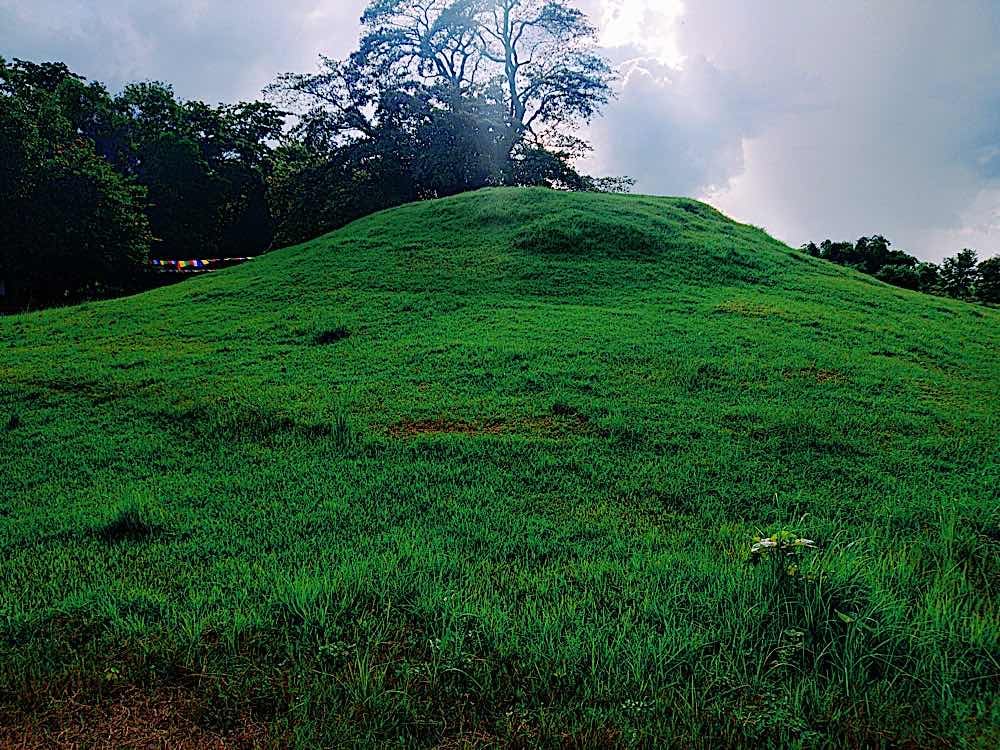
According to legend, robots guarded the other stupas, but Ashoka defeated them. However, upon arriving at Ramagrama, he had a vision of a snake god that told him to leave the site undisturbed. Ashoka complied, instead worshiping at the site.
What Nepal’s Buddhist Ayurvedic Relics Can Teach Us
If you visit Ramgram stupa today, you’ll see a tree upon a grassy hill, sacred Bodhi tree (Ficus religiosa) perhaps not unlike the Bodhi tree under which Siddhartha Gautama once sat and meditated. (see photo.) Despite its unarming appearance, excavation work has determined a stupa lies within this hill. In keeping with tradition, no one has disturbed it. It is currently under consideration as a new World Heritage site.
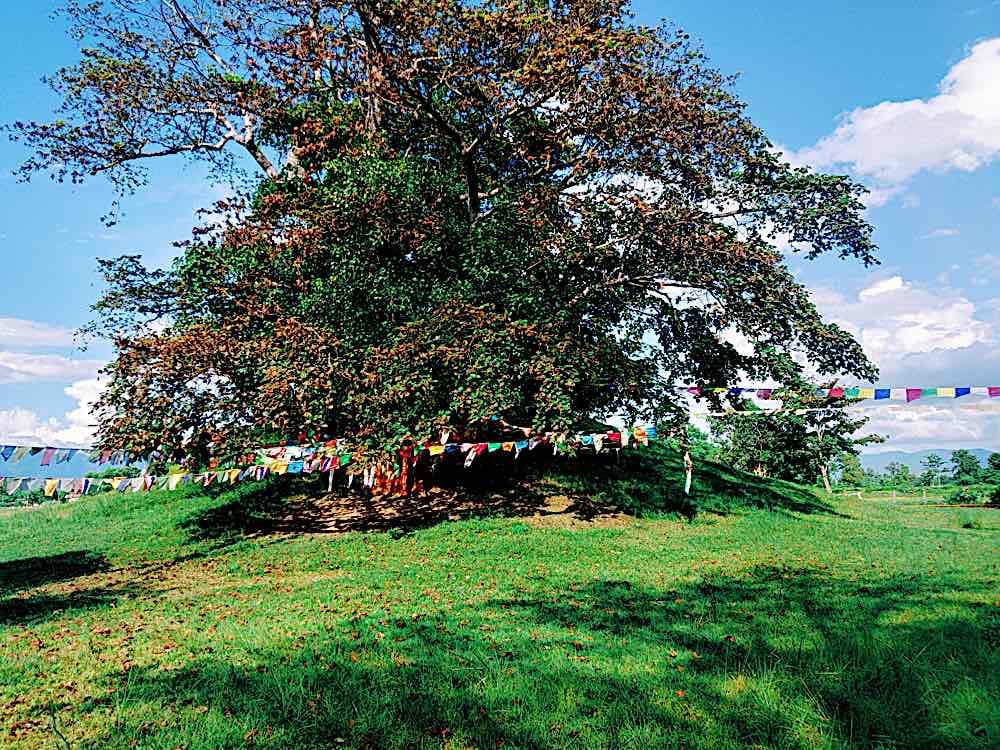
Ramagrama stupa (Nepali: रामग्राम नगरपालिका, also Ramgram, Rāmgrām, Rāmagrāma) is a stupa located in Ramgram Municipality, in the Parasi District of Nepal.
Look closer at the site, and you will see it consists of four trees of different species living in harmony. To Buddhists, this symbolizes the ideal of living in peace: different people with one another, different aspects of creation intertwining as a whole.
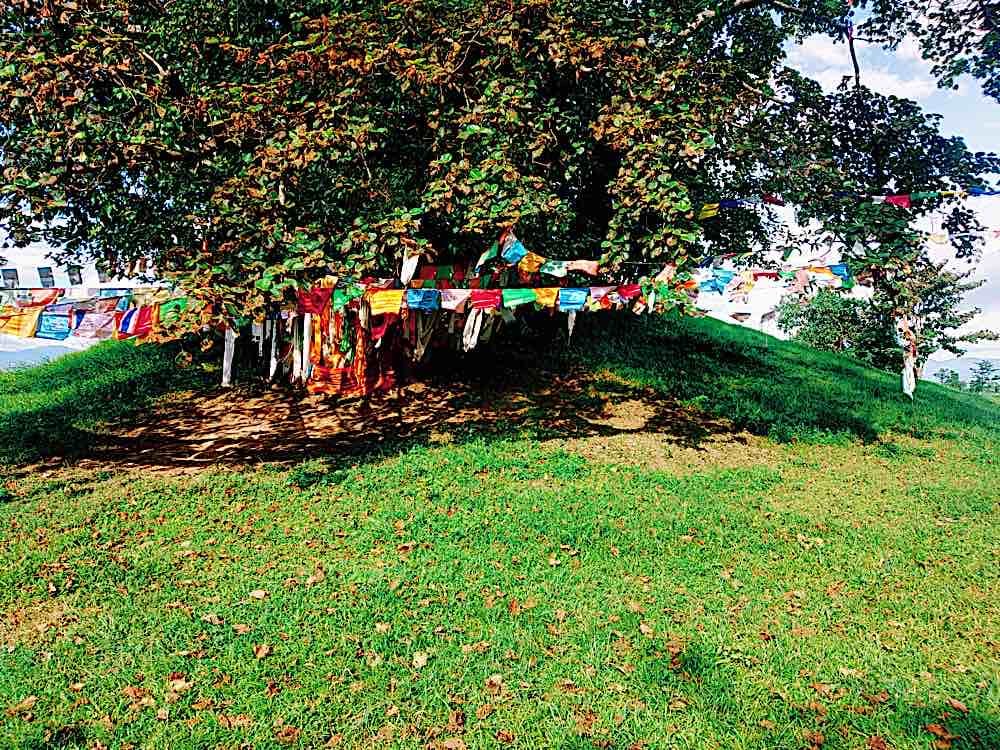
Trees also symbolize the life cycle. As they fall to earth, they become soil that nourishes the next life cycle. In this way, the site also represents the ongoing circle of death and rebirth, with consciousness as the thread uniting past and present.
The Last Relics of Nepal’s Buddhist Ayurvedic Tradition
What continues after death? The last relics of Nepal’s Buddhist Ayurvedic tradition hold clues. However, discerning the answer might always remain a matter of meditation and spirit to preserve the sanctity of this holy site.
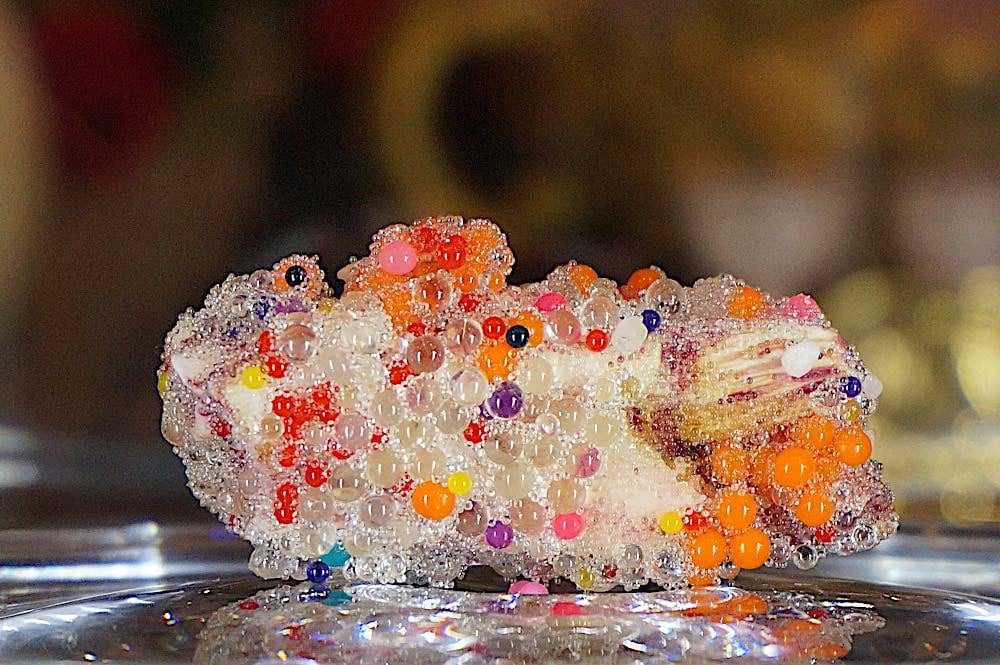
One thing is certain: the last relics of Nepal’s Buddhist Ayurvedic tradition remain standing today, as do the teachings of Siddhartha Gautama. They are physical evidence of the persistence of consciousness beyond this lifetime.
References and Notes
- https://buddhaweekly.com/buddhist-tourism-in-pakistan-the-buddhas-gift-to-the-world-a-20-picture-tour-of-important-buddhist-sites/
- https://buddhaweekly.com/a-rare-chance-to-honor-buddhas-relics-in-new-york-state-3-day-exhibit-of-holy-relics-at-thekchen-choling/
Photos of Bodhi Tree at Stupa: By Sukrat Gaud – Own work, CC BY-SA 4.0, https://commons.wikimedia.org/w/index.php?curid=82523538
More articles by this author
Search
Latest Features
Please support the "Spread the Dharma" mission as one of our heroic Dharma Supporting Members, or with a one-time donation.
Please Help Support the “Spread the Dharma” Mission!

Be a part of the noble mission as a supporting member or a patron, or a volunteer contributor of content.
The power of Dharma to help sentient beings, in part, lies in ensuring access to Buddha’s precious Dharma — the mission of Buddha Weekly. We can’t do it without you!
A non-profit association since 2007, Buddha Weekly published many feature articles, videos, and, podcasts. Please consider supporting the mission to preserve and “Spread the Dharma." Your support as either a patron or a supporting member helps defray the high costs of producing quality Dharma content. Thank you! Learn more here, or become one of our super karma heroes on Patreon.
Beth Rush
Author | Buddha Weekly
Beth Rush is the Managing Editor and content manager at Body+Mind. She is a well-respected writer in the personal wellness space and shares knowledge on a variety of topics related to nutrition, holistic health, and mental health. You can find Beth on Twitter @bodymindmag.




